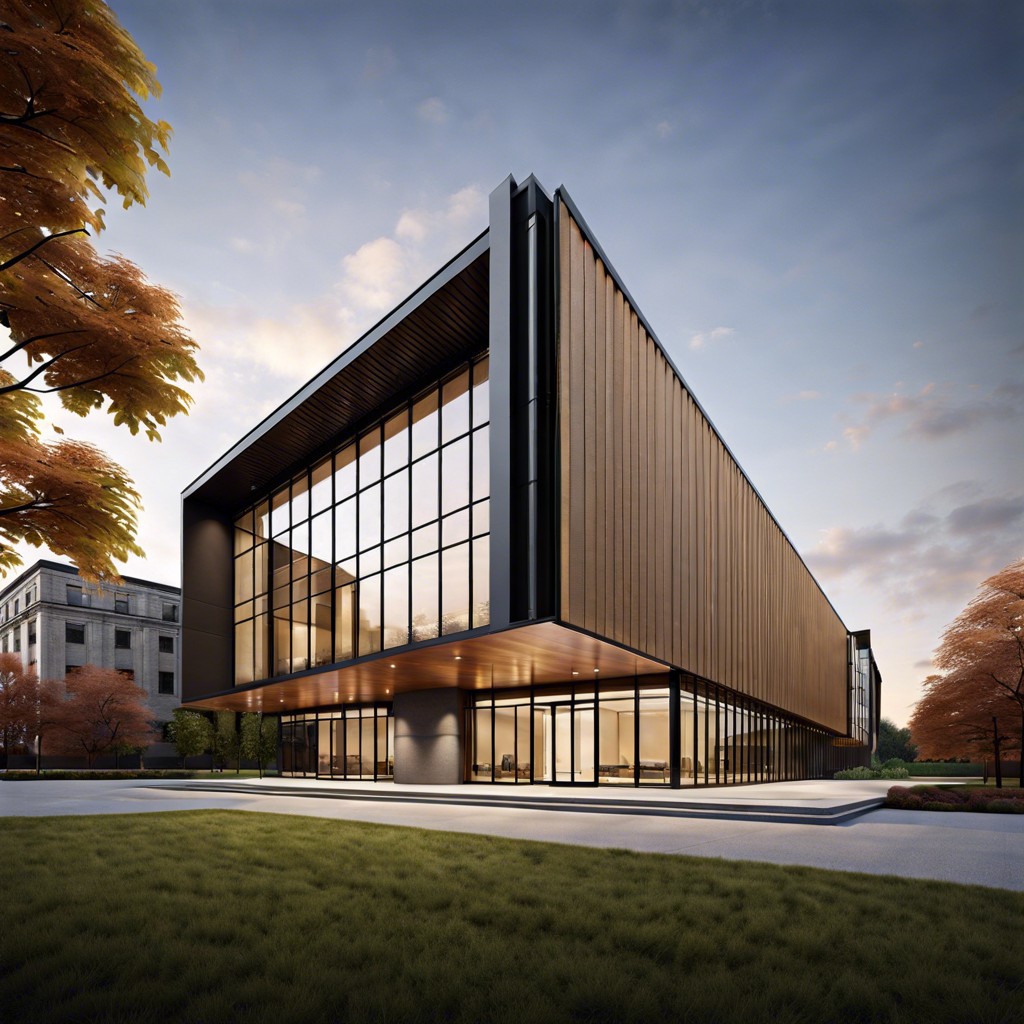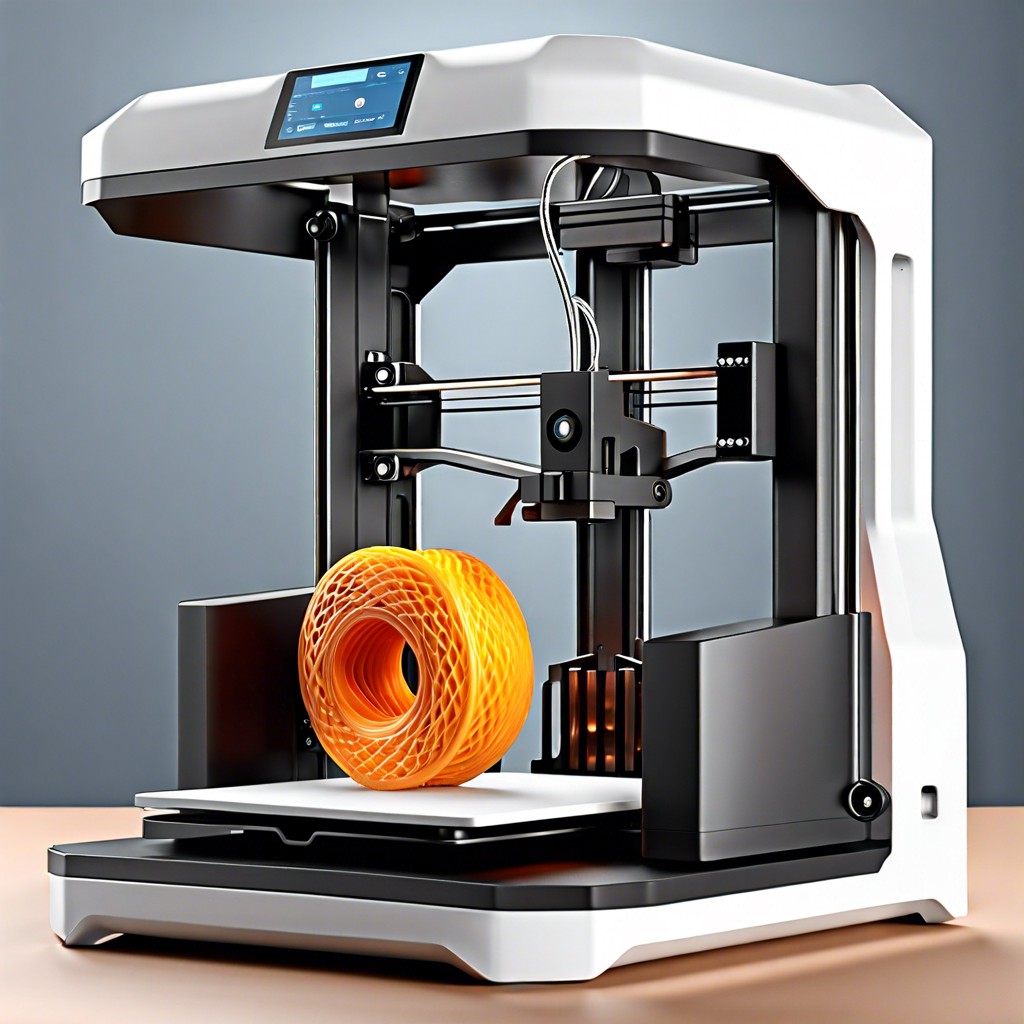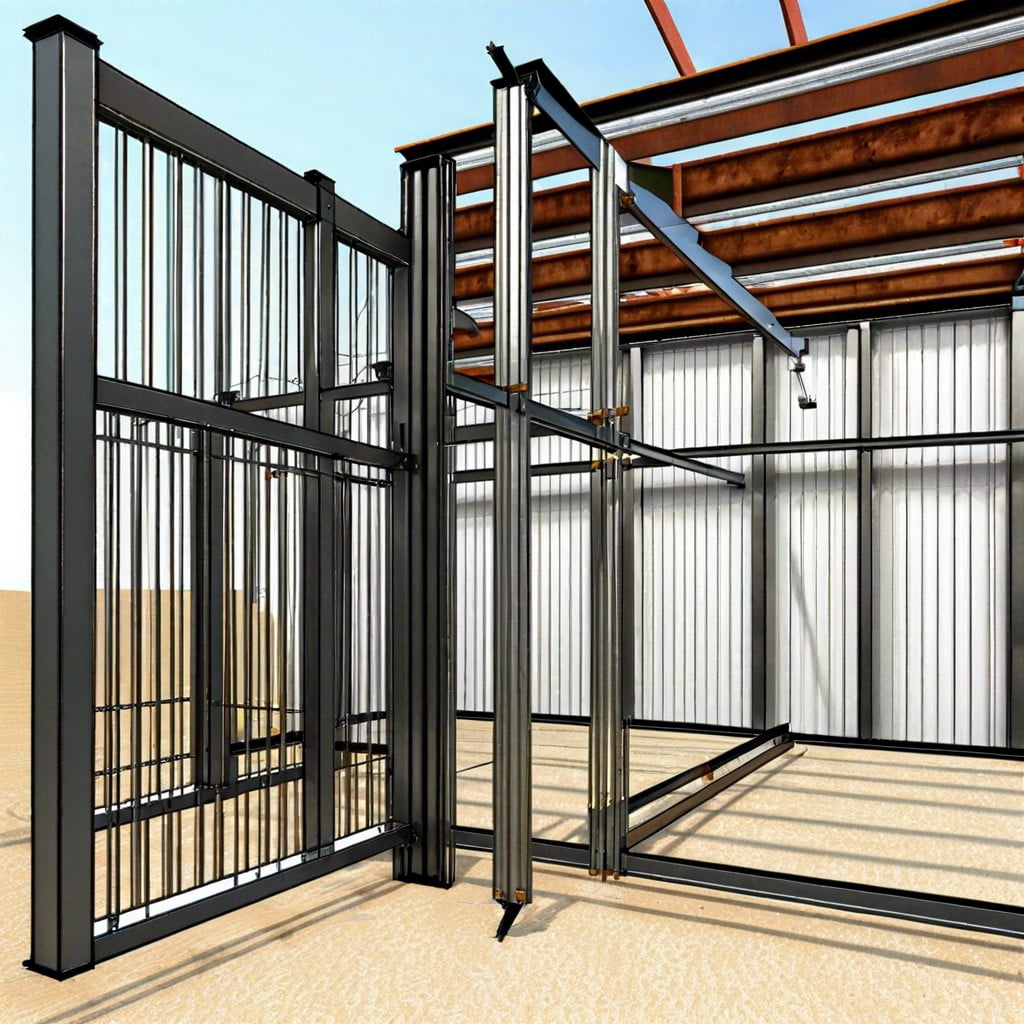Understanding the benefits of self-framing windows for metal buildings is crucial because they offer design flexibility, energy efficiency, and easy installation.
Key takeaways:
- Self-framing windows have integrated frames that align seamlessly with metal paneling.
- Construction: Heavy-duty materials ensure a unified build with metal siding.
- Design: Built-in flanges eliminate the need for additional framing materials.
- Installation: Merging window frame with wall panels improves weather resistance.
- Benefits: Design flexibility, energy efficiency, easy installation, and durability.
Understanding Self-Framing Windows for Metal Buildings
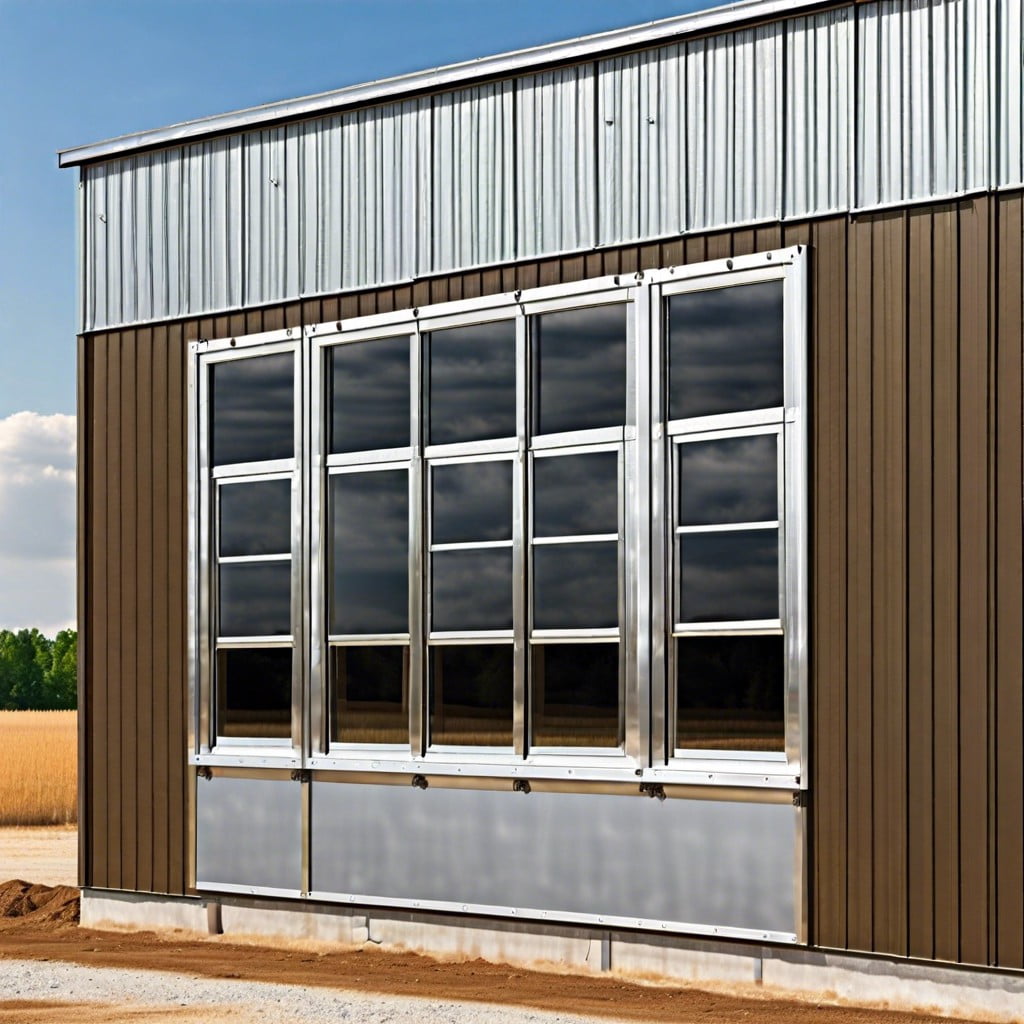
Self-framing windows are designed with integrated frames that align seamlessly with the metal paneling of a building, providing structural integrity and an aesthetically pleasing look. They are ideal for metal buildings due to their ease of installation and durable nature, which matches the longevity of metal constructions.
1. Construction: These windows are made with heavy-duty materials that complement the strength of the metal siding and roofing, ensuring a unified build.
2. Design: Their design typically involves built-in flanges that allow them to overlap with the metal wall panels, eliminating the need for additional framing materials and reducing thermal bridging.
3. Installation: The merging of the window frame with the wall panels is not only time-efficient but also establishes a stronger bond between the window and building, greatly improving weather resistance.
Understanding these basic aspects of self-framing windows allows for a more comprehensive approach when incorporating them into metal building designs.
Benefits of Self-Framing Windows in Metal Building Construction
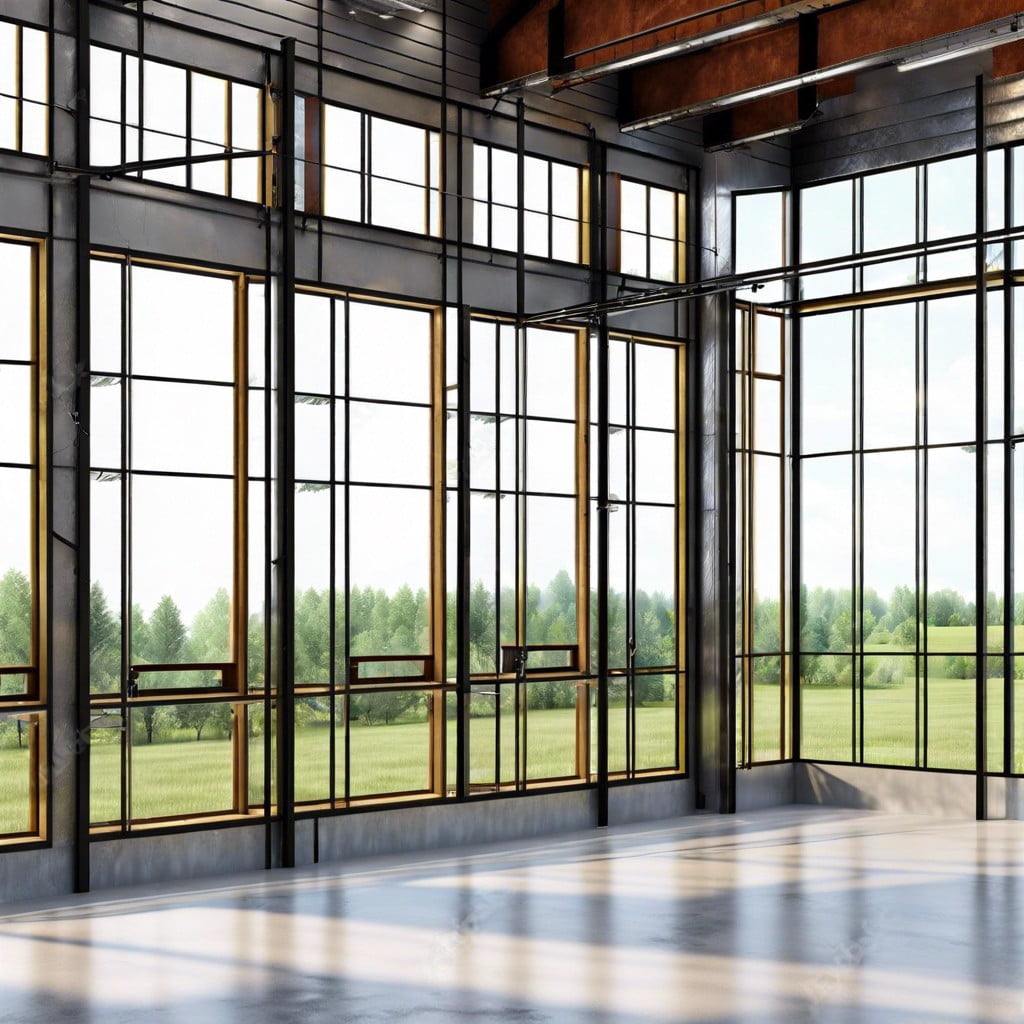
Self-framing windows provide a formidable blend of practicality and aesthetic appeal, making them an advantageous choice for metal building construction. Their ability to seamlessly integrate into the pre-cut openings of metal walls eliminates the need for additional framing materials, which simplifies the installation process and reduces overall construction time.
These windows are specifically designed to withstand the rigors of a metal’s thermal expansion and contraction, enhancing durability. The robust construction of these windows also contributes to improved security, offering peace of mind for property owners.
Furthermore, self-framing windows are known for their energy efficiency. By fitting snugly into the building’s envelope, they minimize air leakage, which can drastically cut heating and cooling costs. Their design allows for the incorporation of advanced glazing technologies that improve insulation and reduce solar heat gain.
Versatility is yet another notable benefit; they can be adapted to a wide range of metal building types, from industrial warehouses to commercial storefronts, making them a versatile option for diverse architectural applications. Additionally, they contribute to the building’s overall appearance, with clean lines and a modern look, enhancing the structural facade and potentially increasing property value.
Key Features of Self-Framing Windows
Self-framing windows, designed for seamless integration into metal structures, offer distinct advantages that enhance their functionality:
- Construction: These windows have a built-in frame that is directly formed into the window system, allowing for a flush mount with the building’s exterior and interior walls.
- Material Compatibility: Manufactured typically from heavy-duty aluminum or galvanized steel, materials are chosen for their compatibility with the metal building’s structure, ensuring longevity and ease of maintenance.
- Energy Efficiency: Many come with thermal breaks and insulated glazing, which reduce thermal transfer, helping to keep building interiors comfortable and energy costs low.
- Design Versatility: Available in various sizes and styles, they can accommodate a range of aesthetic preferences and functional requirements, from fixed-pane windows for consistent light to operable ones for ventilation.
- Leak Resistance: The design often includes weep systems and internal gutters, features that minimize the risk of water infiltration.
- Ease of Installation: The integrated frame eliminates the need for additional window framing, speeding up the installation process and reducing labor costs.
- Durability: The construction materials and design make these windows particularly resilient to weather conditions and wear over time, suitable for harsh environments.
By integrating these key features, self-framing windows offer a robust solution for metal buildings that require minimal maintenance while providing maximum utility and performance.
Selecting the Right Self-Framing Window for Your Metal Building
When choosing a self-framing window for your metal building, consider the following points:
1. Size Matters: Measure the intended window opening accurately to ensure a snug fit, which is vital for structural integrity and energy efficiency.
2. Glass Specifications: Select double or triple-glazed windows for better insulation. Tinted glass reduces glare and UV exposure, while tempered glass offers enhanced safety.
3. Frame Material: Aluminum is a popular choice for its strength, durability, and resistance to corrosion. Ensure the frame finish complements the building’s aesthetic.
4. Energy Efficiency: Look for windows with a low U-value, indicating higher insulative properties, and opt for those with ENERGY STAR ratings where applicable.
5. Operational Style: Determine whether a fixed, sliding, or casement window best suits your needs in terms of ventilation, egress, and usability.
6. Local Climate: Choose window features that match your region’s weather patterns, such as double weather-stripping for areas with high winds or thermal breaks for extreme temperatures.
7. Building Codes: Verify that your window selection meets local building standards for safety, energy conservation, and material specifications.
8. Manufacturer Reputation: Research manufacturers and select one with a strong track record of quality and service.
By carefully evaluating these factors, you’ll find a self-framing window that aligns with your metal building’s functional needs and aesthetic preferences.
Installation Process of Self-Framing Windows in Metal Buildings
The installation process starts with precise measurements to ensure a proper fit within the building’s metal panelling. These dimensions dictate the cutting of the corresponding opening, which should be executed with accuracy to avoid structural compromise.
Once the opening is ready, anchors are welded or otherwise affixed to the metal structure to provide a secure fixing point for the window. It’s essential these are aligned correctly to maintain the integrity of both the building and the window unit.
The self-framing window is then positioned into the opening. Its design typically allows for the frame to snugly overlay the edges, creating a natural seal against weather elements. Fasteners—often included with the window—are used around the perimeter to secure the window to the building and the anchors.
Sealant is applied around the exterior to reinforce the weatherproofing. Depending on the type of self-framing window, additional trim or caps may be applied to bolster protection and enhance aesthetics.
The final step involves installing any necessary hardware, such as handles or locking mechanisms, and ensuring the unit operates smoothly without any obstruction or misalignment.
Ensuring Proper Insulation With Self-Framing Windows
Effective insulation is paramount in any metal building to maintain energy efficiency and interior comfort. For self-framing windows, proper insulation involves the correct installation of the window unit and the use of quality sealing materials.
- Using Insulated Glass Units (IGUs): Double or triple-pane IGUs filled with inert gas, like argon or krypton, provide excellent thermal resistance.
- Thermal Breaks: Install windows with built-in thermal breaks to reduce heat conduction through the metal frame, which is crucial in minimizing energy loss.
- Expanding Foam Insulation: Apply expanding foam around the window frame to seal gaps and prevent air leakage. This creates a tight envelope, keeping the elements out.
- Weatherstripping: Weatherstripping is essential for movable parts of the window. It prevents drafts and ensures the window unit is airtight.
- Proper Installation: Ensure that the window is level, plumb, and securely fastened to the metal building structure. Improper installation can lead to gaps and thermal bridging.
Remember, while self-framing windows are designed for easy integration into metal structures, they must be paired with careful insulation practices to maximize their efficiency benefits.
Maintenance Tips for Self-Framing Windows
Regular maintenance is critical for preserving the functionality and appearance of self-framing windows. To start, routine cleaning of both the glass and frame helps prevent buildup of dirt and grime that can impede window operation and clarity. Use a mild soap solution and a soft cloth to clean the surfaces, avoiding abrasive materials that could scratch the glass or damage the frame’s finish.
Inspecting sealants annually for signs of wear such as cracks or gaps is also important. Should any deterioration be detected, resealing may be necessary to maintain insulation and prevent moisture ingress that could lead to corrosion or mold growth.
Check for smooth operation of moving parts if your windows are designed to open. Lubricate hinges, tracks, and rollers as needed to guarantee ease of use and to reduce wear. When addressing lubrication, be sure to use a product that is recommended for metal components and avoid petroleum-based lubricants that may degrade rubber seals.
Monitoring weather stripping is also crucial. Replace it if you notice any damage or if it’s no longer providing a tight seal. This will not only keep out drafts but also improve energy efficiency.
Lastly, if you notice any scratches or signs of rust on the metal parts of the window, it’s crucial to address these promptly. Applying touch-up paint can prevent corrosion from spreading, maintaining the structural integrity and aesthetic of the window.
By adhering to these straightforward maintenance practices, the longevity and performance of your self-framing windows can be significantly extended.
Customization Options for Self-Framing Windows
Customization options for self-framing windows become vital when you need to tailor your metal building’s appearance and functionality to specific requirements. Whether your priorities lie in aesthetics, energy efficiency, or practicality, there’s a range of choices to consider:
1. Window Sizes: From small openings for light to large panes for visibility, dimensions can be specified to the nearest inch to fit unique wall measurements.
2. Glass Types: You can opt for double or triple-pane glass for enhanced thermal performance, or tinted and frosted glass for privacy and sun control.
3. Frame Materials: Choose between aluminum, vinyl, or even wood-composite frames, each offering different looks and performance characteristics.
4. Colors and Finishes: Frames can be powder-coated in various colors to match or contrast with the building’s facade, promoting branding or architectural harmony.
5. Operational Styles: Casement, awning, slider, or fixed; the operational design can be selected based on the desired ventilation and use patterns.
6. Accessories: Add-ons like screens, internal blinds, or security bars can provide added functionality and security to meet specific needs.
By exploring these customization options, you can ensure your self-framing windows integrate seamlessly into the broader design and function of your metal building.
Addressing Common Concerns With Self-Framing Windows
Many building owners express concerns regarding the integration of self-framing windows into metal structures. A primary concern involves potential leakage, which can be mitigated by ensuring correct installation and using quality sealing materials. Manufacturers typically provide detailed guidelines to prevent such issues.
Thermal performance is another key area where questions arise. Advanced glazing options and proper insulation around the frame cater to energy efficiency, addressing worries about heat loss or gain.
Durability is also high on the list of inquiries. Due to their robust construction, these windows are designed to withstand the unique demands of metal buildings, including expansion and contraction. Furthermore, the aluminum or steel frames of self-framing windows naturally resist corrosion, aiding longevity.
For those worried about the customizability, it’s important to note that self-framing windows come in various sizes and styles, allowing for aesthetic integration with the building’s architecture without compromising on functionality.
Lastly, challenges with installation may cause hesitation. However, self-framing window systems are engineered for a streamlined process, meaning a professional installer can fit them effectively, ensuring that the common installation-related concerns are minimized.
Case Studies: Successful Implementations of Self-Framing Windows
Actual projects reveal the impact of self-framing windows in metal buildings. A warehouse in the Midwest replaced traditional pane windows with self-framing alternatives, resulting in enhanced structural integrity and reduced installation time. The streamlined design eliminated the need for additional framing, and the factory-applied finish reduced on-site labor.
Another example is an aircraft hangar in Florida that integrated self-framing windows, which withstood harsh weather conditions due to their robust construction. These windows contributed to maintaining the building’s airtightness and insulation, leading to energy cost savings.
In a commercial setting, an auto dealership utilized self-framing windows for their showroom. This choice provided large, unobstructed views while ensuring easy maintainability and resistance against daily wear and tear.
These cases demonstrate the practicality and efficiency of incorporating self-framing windows into metal buildings across different climates and functions. Each instance underscores the value in enhanced durability, installation convenience, energy efficiency, and aesthetic versatility.
Where to Purchase Self-Framing Windows
Self-framing windows for metal buildings are available for purchase from a variety of sources. Manufacturers specializing in metal building components often carry a range of these windows, offering both standard sizes and custom dimensions. Distributors and suppliers with a focus on construction materials also stock these windows and can provide valuable guidance on which models best fit specific project requirements.
Local home improvement stores might have limited options available, but they can often special-order windows to meet your needs. Additionally, online retailers provide a broad selection with the convenience of direct shipping. When purchasing online, be sure to verify product specifications and warranty information carefully.
Building contractors with experience in metal structures are another resource, as they may have preferred vendors and can facilitate the procurement process for their clients. Architectural firms involved in designing metal buildings might also recommend suppliers they have worked with successfully in the past.
For high-quality self-framing windows, consider reaching out to industry-leading brands recognized for their durable and energy-efficient products. Engage with professional associations related to metal building construction for referrals to trusted suppliers, and always ensure that the provider complies with relevant building codes and standards.
Steel Subframes
Steel subframes form the essential support structure for self-framing windows in metal buildings, providing stability and security to the window installation.
These subframes are typically constructed from galvanized steel to resist corrosion and extend longevity.
The design ensures a snug fit within the metal building’s pre-cut openings, streamlining the installation process.
Additionally, the strength of steel subframes allows for the accommodation of various types of glazing, from single to double pane, and the capacity to withstand harsh environmental conditions without warping or deteriorating over time.
Their versatility also supports a range of window sizes and styles, enabling customization to meet specific aesthetic and functional requirements.
When integrating steel subframes, it’s critical to ensure that their dimensions and profiles match the specifications of the building and the windows for a seamless and efficient assembly.
Window Trim
Window trim serves both aesthetic and functional purposes in the installation of self-framing windows on metal buildings. It provides a clean, finished look around the window’s perimeter and helps to bridge the gap between the building’s metal cladding and the window unit.
Materials: Typically made from the same material as the building’s exterior—aluminum or steel—the trim matches the metal panels ensuring durability and cohesion in design.
Sealing: The trim also plays a crucial role in weatherproofing, preventing moisture and air from entering the building through gaps around the window frame.
Installation: It’s attached after the window is in place, using screws or rivets that are then sealed to prevent leaks.
Styles: Trim comes in various styles to complement the architectural features of the building, whether you prefer a subtle, flush appearance or a bolder, protruding profile.
Color Matching: Manufacturers often offer custom color matching for trim, allowing you to maintain or enhance the building’s aesthetic.
Energy Efficiency: A proper trim installation can improve the overall energy efficiency of a building, reducing drafts and heat transfer.
Selecting the right trim is vital for the integrity and appearance of your metal building, so take the time to consider all options and ensure a precise fit.
Slider Windows
Slider windows are a practical choice for metal buildings, offering both functionality and aesthetic appeal. These windows operate by sliding horizontally, allowing for easy control of ventilation and natural light. They are an excellent option for locations where exterior space is limited, as they do not require any clearance to swing open like traditional casement or awning windows.
When incorporating slider windows into a metal building, consider the following points to ensure optimal performance and integration:
- Size and Placement: Determine the appropriate size based on the wall space available and intended use. Position slider windows strategically to enhance airflow and maximize daylight without compromising structural integrity.
- Glazing Options: Opt for double or triple glazing to improve thermal efficiency. Tinted or low-emission coatings can be applied to reduce solar heat gain and protect against UV radiation.
- Frame Material: Choose a durable frame material that complements the metal building, such as aluminum or vinyl, which requires minimal maintenance and stands up well to the elements.
- Security Features: Look for models with robust locking mechanisms to ensure security. Some slider windows also offer additional safety measures, such as shatter-resistant glass.
- Energy Efficiency: Check for ENERGY STAR ratings to gauge the window’s energy performance. Properly sealed and insulated slider windows can significantly reduce heating and cooling costs.
By carefully selecting and fitting slider windows, you can enhance the comfort, usability, and efficiency of your metal building.
Fixed Windows
Fixed windows, also known as picture windows, provide unobstructed views and serve as a natural light source, making them an ideal choice for metal buildings where interior lighting would otherwise be limited. Unlike operable windows, they don’t open but offer superior energy efficiency due to the absence of gaps and moving parts where air leakage might occur.
When integrating fixed windows into metal structures, consider the following points:
- Placement: Locate these windows strategically to maximize daylight and enhance the aesthetic appeal of the building.
- Glazing Options: Opt for double or triple glazing to improve thermal performance and reduce heating and cooling costs.
- Frame Material: Frames made of aluminum or steel match the structural integrity of metal buildings and ensure longevity.
- Safety Standards: Ensure the glass meets safety regulations, particularly in areas prone to severe weather or where impact resistance is essential.
- Energy Codes: Comply with local energy codes which may dictate specific requirements regarding the U-factor and solar heat gain coefficient (SHGC) for fixed windows.
In selecting fixed windows, balance the need for natural light with the building’s overall energy efficiency goals, ensuring a seamless blend of functionality and design.
FAQ
What kind of windows do I need for a metal building?
For a metal building, consider upper windows for natural lighting, sliding windows for airflow, or fixed windows for a tighter seal, each potentially affecting your rough opening size.
What is a self framing window?
A self-framing window is a type of window that does not necessitate any modifications to the building frame prior to installation, therefore potentially lowering the overall construction cost of a steel structure.
Can you use a vinyl window for a metal building?
Yes, you can use vinyl windows for a metal building as it aids in both cost-effectiveness and meeting stringent energy code requirements.
Can you add windows to a metal shed?
Yes, you can add windows to a metal shed to enhance natural light, heat, ventilation, and energy efficiency.
What steps are involved in the installation of self-framing windows in metal buildings?
The installation process for self-framing windows in metal buildings involves cutting a framed opening in the metal siding, inserting the window frame into the cut-out, and securing it with fasteners.
What are the advantages and disadvantages of using self-framing windows in metal structures?
Self-framing windows in metal structures offer advantages like easy installation and enhanced structural integrity, but they may require frequent maintenance and can limit architectural flexibility.
How do you ensure proper insulation when installing windows in a metal building?
Proper insulation when installing windows in a metal building is ensured by using high-quality, correctly sized windows, sealing gaps with caulking or foam insulation, and providing a thermal break between the window frame and the building structure.
Recap
